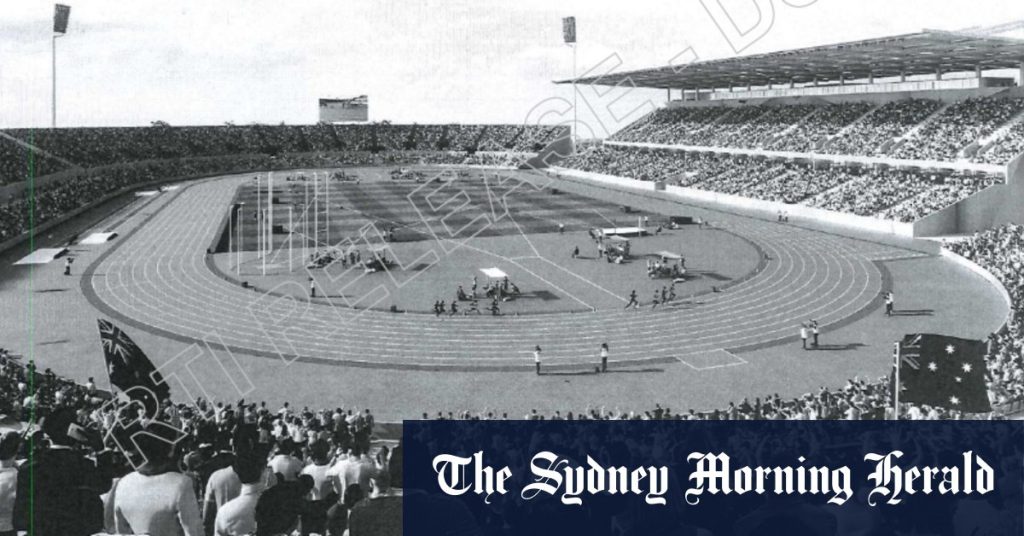Brisbane’s planned Olympic stadium for the 2032 Games has been revealed to be the Queensland Sports and Athletics Centre (QSAC), which will be the smallest Olympic stadium since Amsterdam in 1928. The design, obtained through the Right to Information Act, shows a single permanent covered grandstand with most of the crowd exposed to the elements in uncovered temporary seating. The stadium, designed by architecture firm Populous, will have a capacity of just 40,000 spectators and will be downsized to 14,000 after the Games. The decision to use QSAC as the main Olympic stadium came after the planned $2.7 billion rebuild of the Gabba was abandoned.
Premier Steven Miles rejected the recommendation of the Olympic venues review, led by former Brisbane lord mayor Graham Quirk, which suggested building a new stadium at Victoria Park at an estimated cost of $3.4 billion. Instead, Australian Olympic supremo John Coates’ advice was followed and QSAC was chosen as the main stadium. The Quirk review estimated the cost of building a mostly temporary Olympic stadium at QSAC to be about $1.6 billion, but Lord Mayor Adrian Schrinner stated that an additional $400 million would be required to provide adequate public transport to the venue, which is located 3.1 kilometres from the nearest train station, Banoon.
The decision to hold the Brisbane 2032 Olympics in the middle of winter is unusual for a summer Games. The design of the QSAC Olympic stadium, created by Populous, reflects this change in timing with its no-frills approach and limited capacity. Populous, the same firm that designed the rebuild of Suncorp Stadium in the early 2000s, has opted for a simple and cost-effective design for the temporary Olympic venue. After the Games, the stadium will be downsized to hold just 14,000 spectators, making it a more practical and sustainable option for Brisbane.
The reveal of the QSAC Olympic stadium design sheds light on the planning and decision-making process behind the choice of venue for the 2032 Games. Premier Steven Miles’ decision to follow John Coates’ advice over the recommendations of the Olympic venues review led by Graham Quirk has sparked debate over the cost and practicality of using QSAC as the main stadium. The estimated costs of building and upgrading infrastructure to support the venue raise questions about the overall budget and funding for the Games. The smaller, more modest design of the stadium reflects Brisbane’s pragmatic approach to hosting the Olympics and ensuring a legacy of sustainable and cost-effective sporting infrastructure for the city.
Despite the controversy surrounding the choice of venue, the reveal of the QSAC Olympic stadium design marks a significant milestone in Brisbane’s preparations for the 2032 Games. The decision to use an existing venue rather than build a new stadium underscores the city’s commitment to hosting a practical and efficient Olympic Games. The design of the stadium, with its focus on temporary seating and minimal frills, reflects Brisbane’s efforts to balance the demands of hosting a major international event with the need for sustainable and cost-effective infrastructure. As preparations for the Games continue, the QSAC Olympic stadium will serve as a key venue for hosting athletic events and showcasing Brisbane’s ability to successfully host the world’s biggest sporting competition.


